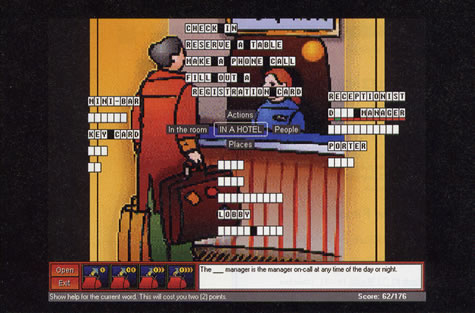| Tips for Teaching with CALL | |||||||||||||||||||||||||||||||||
| In their new book* Carol A. Chapelle and Joan Jamieson show how to use Lingonet Puzzles with your students - try their demonstration by clicking here. | |||||||||||||||||||||||||||||||||
|
|||||||||||||||||||||||||||||||||
| *) Tips for Teaching with CALL Practical Approaches to Computer-Assisted Language Learning Carol A. Chapelle and Joan Jamieson Tips for Teaching with CALL introduces English language teachers to computer-assisted language learning, or CALL. This practical reference book links specific techniques for using CALL with contemporary CALL research. The book and companion CD-ROM clearly demonstrate why and how to use CALL to teach vocabulary, grammar, reading, writing, listening, speaking, communication skills, and content-based language. |
|||||||||||||||||||||||||||||||||
 For
a demonstration of students using this program, see the CD-ROM
at the back of this book.
For
a demonstration of students using this program, see the CD-ROM
at the back of this book.